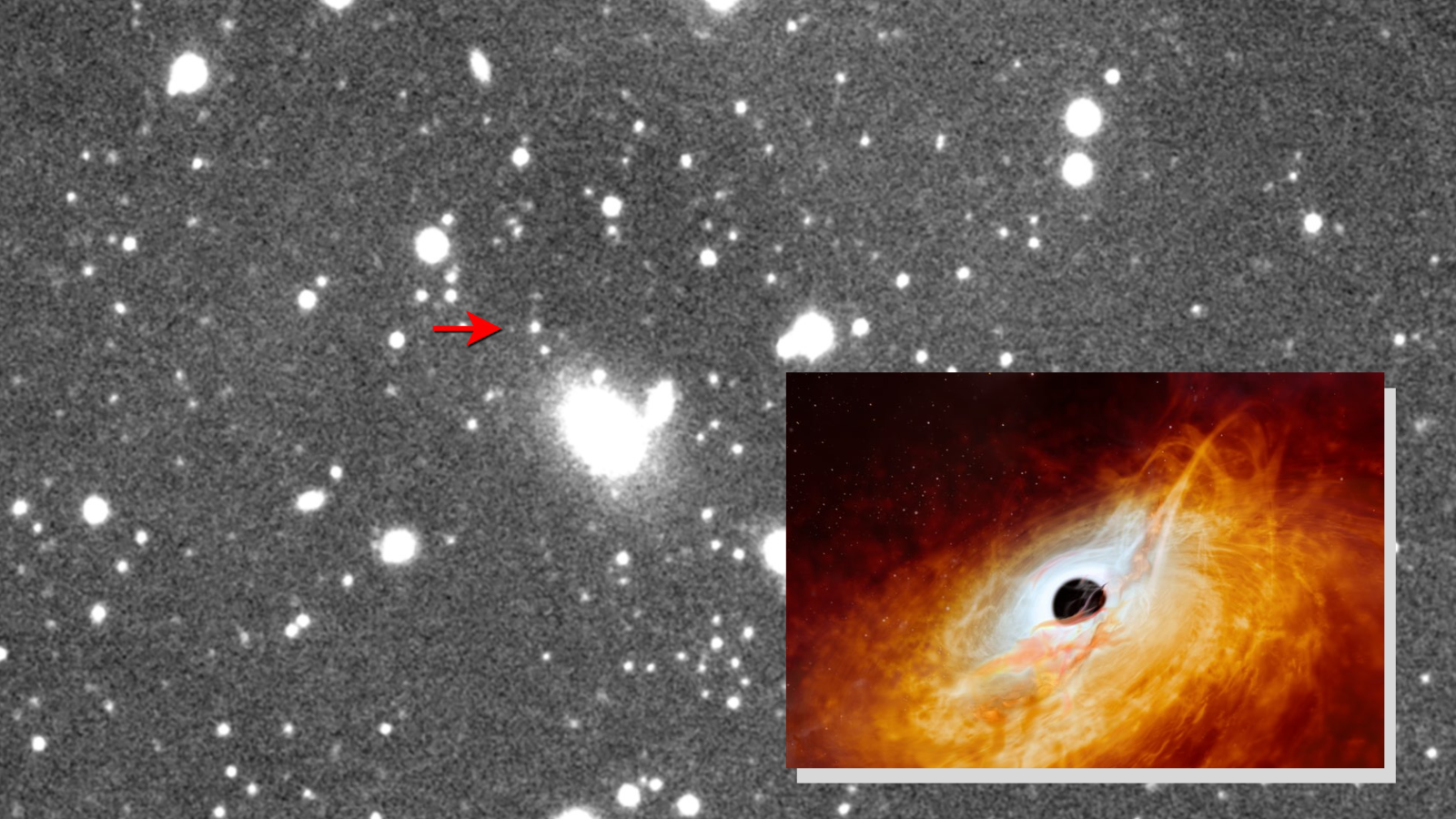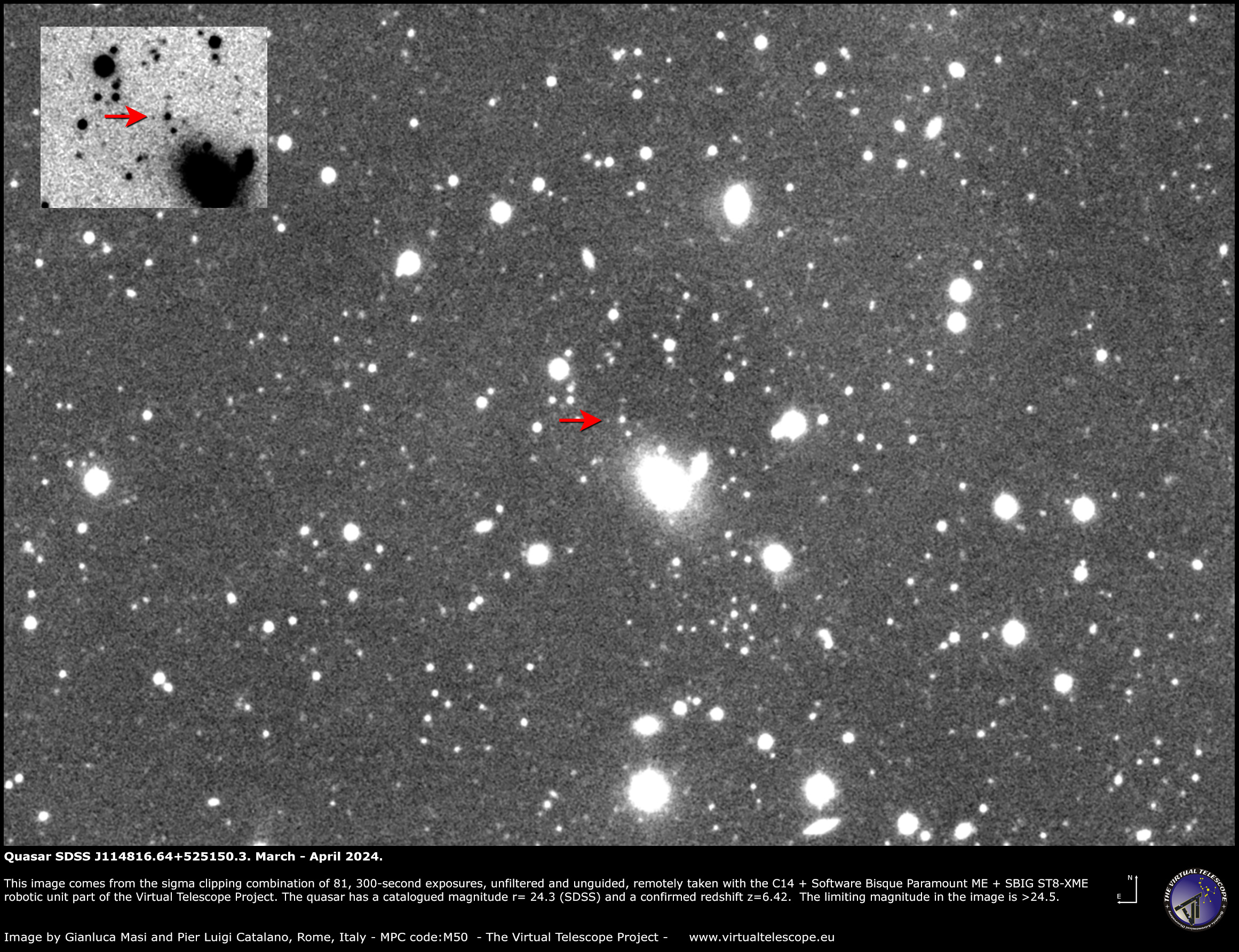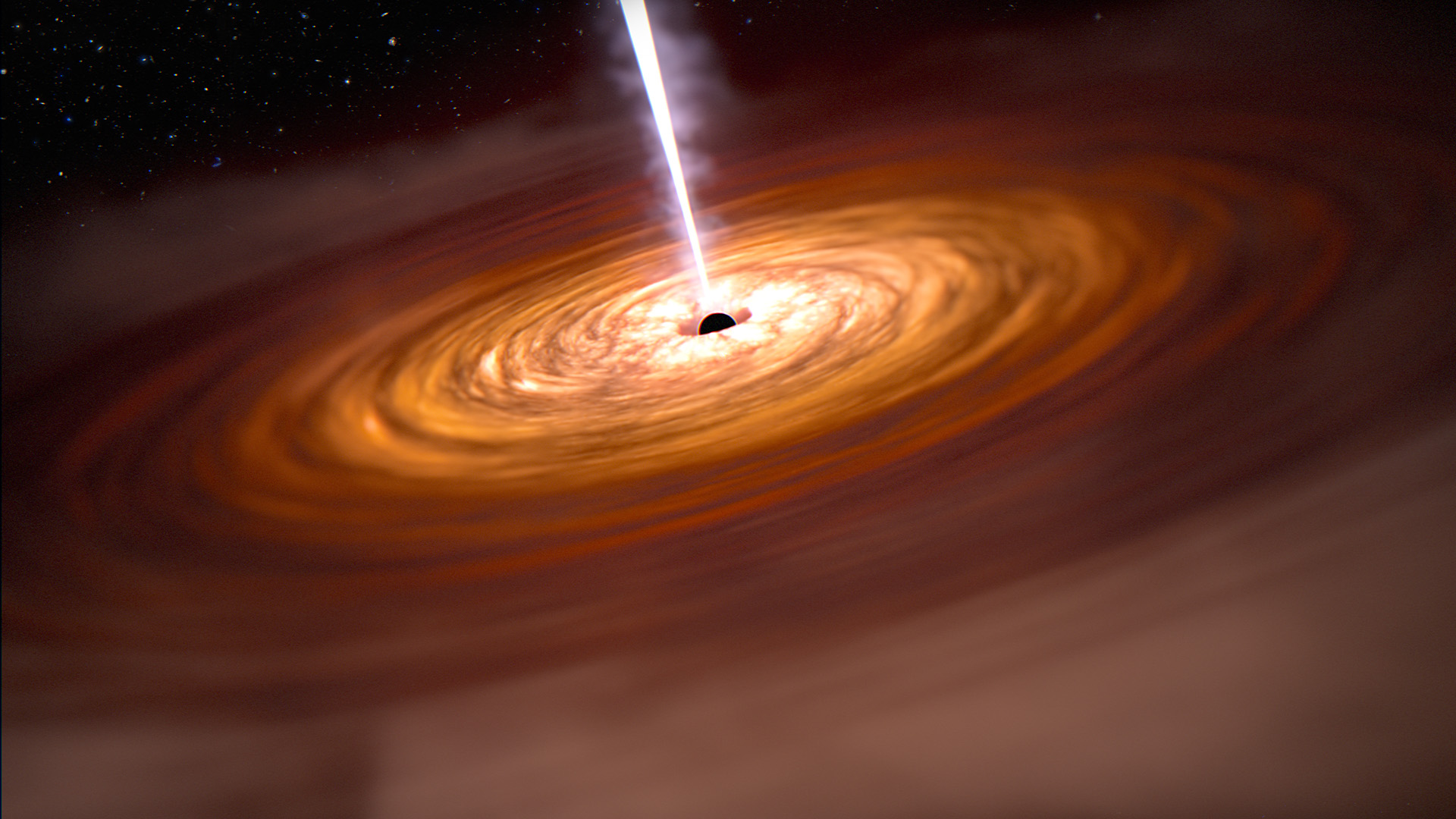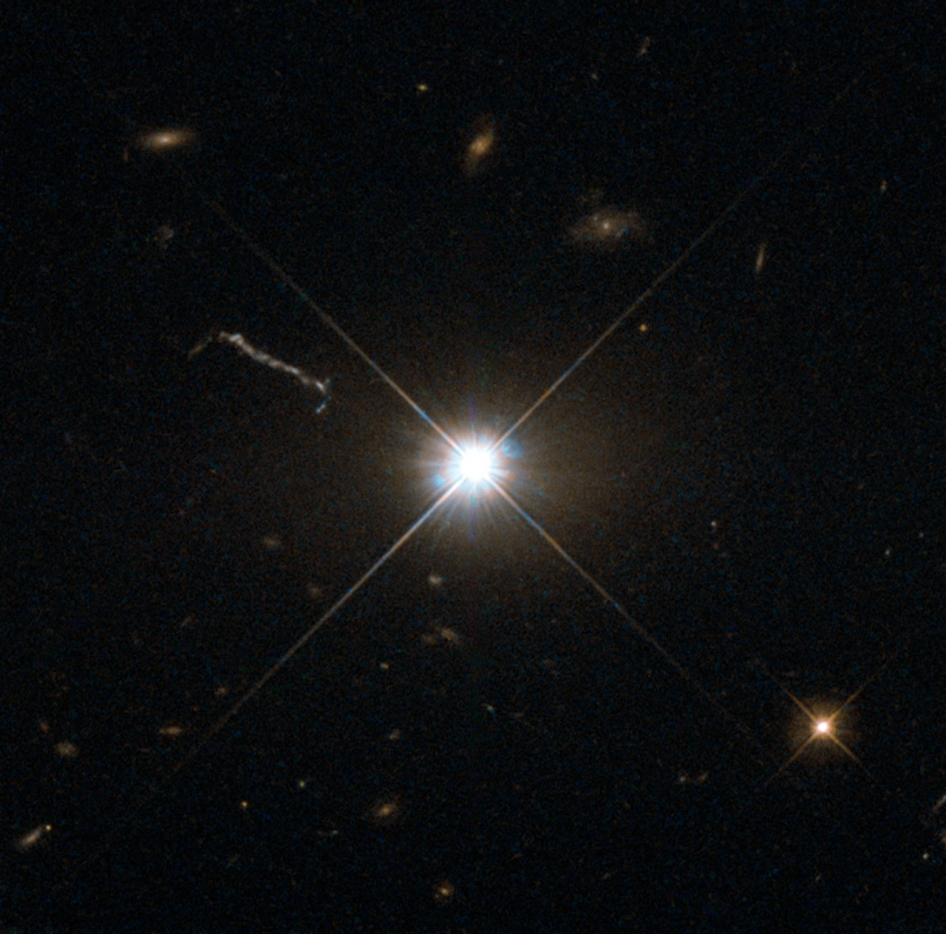Monster black hole seen feeding on nearby matter just 1 billion years after Big Bang (photos)
"This is a record result."

Astronomers have imaged a feeding black hole-powered quasar at the very edge of the universe, so far away that it was seen as it appeared less than 1 billion years after the Big Bang.
The quasar, designated SDSS J114816.64+525150.3, is powered by a supermassive black hole over 3 billion times the mass of the sun located in the direction of the constellation Ursa Major. It was imaged by the Virtual Telescope Project in Italy using its 356 mm (14-inch) aperture robotic unit.
"This is a record result, to my knowledge: Never before, in fact, has a 350mm aperture telescope looked so far back in space and time," Virtual Telescope Project founder and astrophysicist Gianluca Masi told Space.com via email. "It is so far away that its light, observed today from Earth, started its journey almost 12.9 billion years ago, when the universe was less than 900 million years old, compared to the current age estimated at 13.8 billion years."
Related: Brightest quasar ever seen is powered by black hole that eats a 'sun a day'
SDSS J114816.64+525150.3 represents the most distant visible celestial body in the northern sky that is also observable in visible light, according to the astronomer.
When discovered in SDSS J114816.64+525150.3, this quasar was the most distant ever spotted. In the intervening 20 or so years, astronomers discovered 8 quasars located further away. This includes P172+18, which remains the most distant quasar ever seen, located at 13.02 billion light years away, meaning we see it as it was when the 13.8 billion-year-old universe was just around 780 million years old.
The difference is that P172+18 and the other more distant quasars were identified in radio light and then in ultraviolet (UV) to the near-infrared (NIR) light, all invisible to the human eye, whereas SDSS J114816.64+525150.3 has been seen in the light that our eyes have evolved to see.
Get the Space.com Newsletter
Breaking space news, the latest updates on rocket launches, skywatching events and more!

Quasars may be the brightest objects in the universe, but spotting them in visible light is a big deal
SDSS J114816.64+525150.3, like all quasars, owes its brightness and its status as the most energetic object in the sky to the monstrous compact object that sits at its heart: A supermassive black hole that is greedily consuming matter from its immediate environment.
These black holes can have masses millions or even billions of times that of the sun. As they consume gas and dust from a flattened plate of material around them called an "accretion disk," their immense gravity generates tremendous tidal forces in that disk. This heats the accretion disk's gas and dust to incredible temperatures, resulting in it glowing brightly in light across the electromagnetic spectrum.
In addition to this, matter that isn't gorged on by cosmic titan is channeled to its poles by powerful magnetic fields. From there, this matter is blasted out as jets traveling at near light speed. These jets are also accompanied by bright electromagnetic emissions.
Altogether, this often makes these regions (also known as active galactic nuclei (AGNs)) brighter than the combined light of every star in the entire galaxy that surrounds them.
Yet, when they are as distant as billions of light-years away, these powerful celestial objects are still tough to observe. For instance, as bright and powerful as SDSS J114816.64+525150.3 is, in the sky over Earth, the north star Polaris is still a billion times brighter as seen from our planet.

Seeing any object this far back in time in visible light is extremely difficult. That is because as light (electromagnetic radiation) travels, it is redshifted, moving closer to the infrared region of the electromagnetic spectrum. The longer light travels, the more extreme this redshift effect is.

"Due to the expansion of the universe, electromagnetic radiation experiences the so-called redshift, a cosmological effect that determines a shift towards the red end of the observed wavelength, more pronounced the farther the source is," Masi said in a statement. "On this quasar the extent of the phenomenon is such that almost all of its light is shifted into the infrared, with only a tiny fraction remaining in the extreme red side of the visible domain. The very few known quasars farther away are observable only in the infrared."
The detection of this extreme object at these tremendous distances exemplifies the usefulness of the Virtual Telescope Project, founded in 2006, and its remotely controlled robotic telescopes.
Among the projects, other observational targets have been comets, supernovas, eclipses, and meteor showers, delivering images of these celestial bodies to millions of people across the globe. Even so, the observation of SDSS J114816.64+525150.3 may be the Virtual Telescope Project's finest achievement to date.
"Our instrument has succeeded in the incredible feat of immortalizing the most remote celestial body in the northern sky observable at the wavelengths of visible light, at the edge of the universe," Masi concluded.
Join our Space Forums to keep talking space on the latest missions, night sky and more! And if you have a news tip, correction or comment, let us know at: community@space.com.

Robert Lea is a science journalist in the U.K. whose articles have been published in Physics World, New Scientist, Astronomy Magazine, All About Space, Newsweek and ZME Science. He also writes about science communication for Elsevier and the European Journal of Physics. Rob holds a bachelor of science degree in physics and astronomy from the U.K.’s Open University. Follow him on Twitter @sciencef1rst.
NASA spacecraft spots monster black hole bursting with X-rays 'releasing a hundred times more energy than we have seen elsewhere'
Could we use black holes to power future human civilizations? 'There is no limitation to extracting the enormous energy from a rotating black hole'









